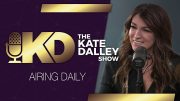Podcast: Play in new window | Download (Duration: 3:13 — 2.9MB)
Subscribe: Android | RSS | More
The Conference Board reported on Tuesday that its index of consumer confidence jumped in September by the biggest increase in 17 years. The index clocked in at 101.8 for the month, up from 86.3 in August. Economists were expecting a reading of just 89.6.
Inside that index were two indicators driving the increase: how consumers feel about the economy right now (98.5 currently, up from 85.8 in August) and how consumers feel about the next six months (104 currently, up from 86.6 in August).
On Wednesday morning, payroll processor ADP reported that the rebounding U.S. economy added nearly 770,000 new jobs in August: 196,000 in the “goods-producing” sector of the economy and 552,000 in the service sector. Franchise employment added another 20,700 jobs last month. Forecasters once again underestimated the strength of the U.S. economy’s rebound from the shutdown: They predicted a 649,000 gain in August.
ADP also revised upward last month’s new jobs report, from 428,000 to 481,000.
The ADP report comes two days before the jobs report from the Department of Labor, the last report on the health of the economy before the election. Forecasters are predicting the DOL will show the economy adding 850,000 new jobs in August, bringing the unemployment rate down further, from 8.4 percent last month to 8.2 percent in September.
The report from ADP was followed by a report on business conditions in the Chicago region on Wednesday morning. The Chicago PMI (Purchasing Managers Index) jumped in September to 62.4 from 51.2 in August, exceeding economists’ forecasts of just 52. All five main components of the index were higher in September, especially new orders and production. Both advanced to nearly two-year highs.
While such reports bode well for those employed, or seeking employment, in the post-COVID economy, they also bode well for the reelection of President Trump in November. According to Dan Clifton, a strategist with Strategas Research, the incumbent party wins in November 87 percent of the time (going back 100 years) when the S&P 500 index is higher the three months prior to the election.
At the start of August, that index was at 3,271. Currently the index is at 3,383, or a gain of 3.4 percent. And, since 1990, stocks in October have gained an average of just under one percent.
The health of the economy is reflected by Wall Street, which in turn reflects an increasing probability of the reelection of the president. This bodes well for the future economy, as the president has promised additional cuts in taxes and regulations given a second term. And, unlike most politicians, President Trump has a tendency to keep his promises.


